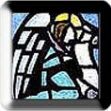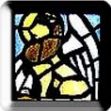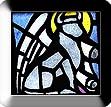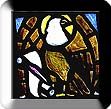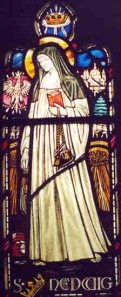A Browse to the Library, happily revealed a couple of the Albert Gelin P.S.S. books, as below.
Monastic Office of Vigils
Gelin, Albert (1902-1960) Born at Amplepius in France, he was ordained priest in 1926. In 1929 he joined to Sulpicians, and became one of the most highly regarded Old Testament scholars in the Catholic world. He taught scripture at the seminary of Lyons from 1931-1939, and after 1937 at the University in the same city. He wrote articles for the prestigious Supplement to the Diciionarv of the Bible, and was much involved in the translation of some of the prophetical books of the Bible de Jerusalem.
TWENTY-EIGHTH WEEK IN ORDINARY TIME
SUNDAY
First Reading Zephaniah 3:8-20
Responsory Zep 2:3; Ps 22:26
Seek the Lord all you in the land who live humbly, obeying his commands. + Seek integrity, seek humility.
V. The poor shall eat and be satisfied; those who seek the Lord shall praise him. + Seek integrity ...
Second Reading From The Poor of Yahweh (27-28) by Albert Gelin
Israel, as it advances along the road of history, constantly encounters God. "Days of the Lord" succeed one another; his appearances are either beneficent or awe-inspiring, either a reward or a punishment, depending on Israel's moral conduct.
This punishment, in the first perspective of the covenant, could not fail to be medicinal and educational. However, after the eighth century, sins multiplied and their gravity increased. Infringements of justice scandalized Amos; Isaiah knew well that he lived in the midst of people of unclean lips; Zephaniah rebuked Judah for faults of pride; Jeremiah was forced to the conclusion that a state of sin existed that made conversion almost impossible. Israel had to learn to accept the sanction of vindictive justice! Yet these prophets, despite all their somber predictions, never lost hope in God's plan for the future. In their eyes the remnant theme safeguarded the theology of the covenant. Henceforth, the task and promises which were once entrusted to the people of Israel as a whole would belong to a small and select group of Israelites. The Israel of tomorrow will be the remnant.
In the seventh century the remnant was given a special name that was to last until the coming of Christ and that made them a people apart. The prophet Zephaniah identified the people of the future as a people of "the poor."
Zephaniah witnessed Judah's first great humiliation. At the end of the eighth century Assyria cut the Promised Land in half as the result of Sennacherib's victorious conquest. Jerusalem was saved by a miracle, but Asshur's protective custody left the people little freedom. Perhaps it was this humbling situation that inspired the prophet to choose the suggestive vocabulary in which he formulated his spiritual synthesis. Israel's endemic poverty had attracted the charitable pity of the Deuteronomist and the prophets. Amos had sympathized with the stooped and emaciated people. Zephaniah borrowed these words and transfigured them: they ceased to denote failure and became a claim for protection. People must be poor before God, just as they were already poor in the presence of Asshur. Specifically, this meant the rooting out of all pride. Zephaniah invited his contemporaries to spiritual poverty, which is faith plus abandonment, humility and absolute confidence. He insisted that poverty be substituted for pride and made it the authentic spiritual attitude. This fundamental position includes the rectitude of the whole moral life. Lastly, the covenant vocabulary clarified the vocabulary of poverty and justice: the remnant is the people of the future, to whom belong the messianic promises of security and abundance.
Responsory Lk 4:16-18; Mt 5:3
Jesus stood up to read and found the passage which says: The spirit
of the Lord is upon me because + he has anointed me to preach good news to the poor.
V. Blessed are the poor in spirit, for theirs is the kingdom of heaven. + He has anointed





